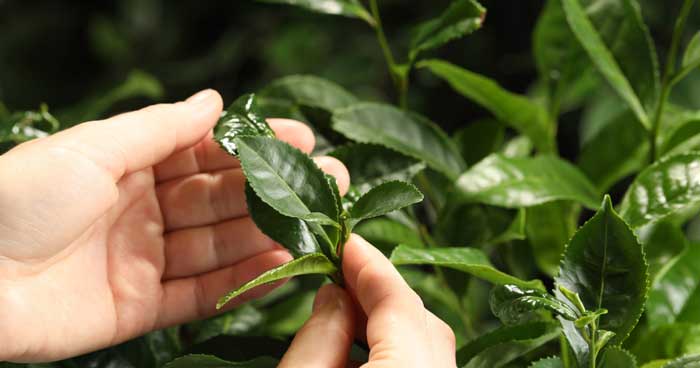Let’s chat about something super special called “First Harvest Matcha.” So, what is first harvest matcha? Imagine it’s springtime, and all the tea plants are waking up from their winter sleep. The very first leaves they push out into the sunshine are what we use to make this matcha. Since these leaves are the first of the year, they are really special – like the tea plants have been saving up all their energy all winter just to make these leaves extra awesome.
What’s So Special About It?
Think of the first harvest matcha as the all-star of the tea world. Because these leaves are the first ones the tea plant produces, they’re packed with all the good stuff. They’ve had all winter to soak up nutrients from the soil, so they’re bursting with flavor and health benefits. This is why first harvest matcha is often seen as the premium pick – it’s like the gold medalist in the matcha Olympics!
The taste is something else. It’s smoother, a bit sweeter, and way more vibrant than what you might get from leaves picked later in the year. If matcha were music, first harvest matcha would be your favorite song – the one that makes you stop and say, “Wow, this is good.”
Why Is It the Premium Choice?
Calling something “premium” or “ceremonial grade” or “supreme” is just a fancy way of saying it’s top-notch, and first harvest matcha earns this title because it’s made from the best of the best leaves. The tea bushes have been chilling all winter, gathering energy, and when spring comes, they’re ready to show off. The very first leaves they grow are like the plant’s gift to tea lovers.
Because these leaves are so special, they’re treated with a lot of care. They’re picked gently, dried carefully, and ground into a fine powder that becomes the matcha we love. This careful process makes sure all the goodness from the leaves ends up in your cup.
So, when you hear “first harvest matcha,” think of it as the star player of the tea world, offering you the best taste and the most benefits. It’s like treating yourself to a little luxury, a little moment of “wow,” in your day.
Understanding First Harvest Matcha
Imagine a tea farm filled with rows and rows of tea bushes, all waking up from their winter sleep as spring arrives. The farmers have been waiting for just the right moment to pick the leaves. They don’t want them too young or too old – they have to be just right.
When spring kicks in, these tea bushes start to sprout new leaves. This is what we’re waiting for – the first new leaves of the year, known as the “first flush.” The farmers get ready to pick these leaves, and there’s a sense of excitement in the air because everyone knows these are going to make the best matcha.
The picking is usually done by hand because these leaves are super delicate. The farmers are very gentle, ensuring not to bruise or damage them. This care is part of what makes first harvest matcha so special and expensive.
Why First Harvest?
Now, you might wonder, why all the fuss about these first leaves? Well, during winter, the tea plants are like bears hibernating. They’re not growing, but they’re slowly gathering nutrients and energy from the soil. When spring comes, all that stored goodness goes into the first leaves they grow. That’s why these leaves are like little green treasures packed with flavor and nutrients.
Also, right before the harvest, the plants are often covered with shades. This is like putting the plants on a light diet – they get less sunlight. This makes the leaves grow slower and become finer and packed with more good stuff like amino acids, which make the tea taste sweet and less bitter.
Timing and Method Matter
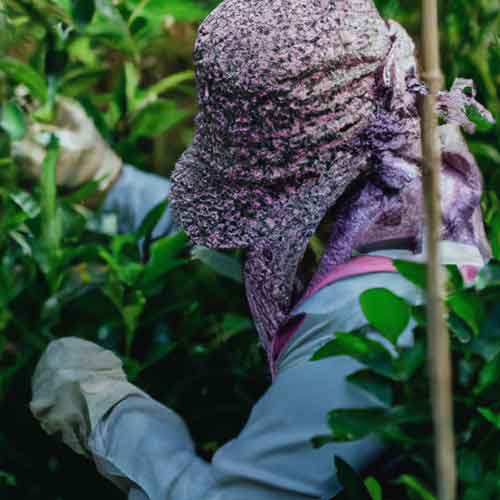
The timing of the harvest is crucial. It has to be just when the leaves are perfect – not too young and not too old. This is usually in early spring. If you pick them too early, they might not have developed their full flavor. Wait too long, and you might lose that fresh, vibrant quality that makes first harvest so amazing.
The method is just as important. By covering the plants, reducing their sunlight, and then picking the leaves by hand, the farmers make sure each leaf is as good as it can be. After picking, the leaves are steamed, dried, and ground into the bright green powder we know as matcha.
So, the first harvest matcha is all about timing, care, and traditional methods. All these steps help enhance the flavor profile, making the matcha taste smooth, rich, and slightly sweet. It’s like the tea version of a perfect spring day – fresh, green, and full of life.
First Harvest And Ceremonial Grade Matcha
Alright, let’s talk about first harvest matcha in simple terms and clarify some common misunderstandings.
In the world of matcha, the term “first harvest” is really important. This term refers to tea made from the very first leaves picked at the start of the tea growing season in Japan. Imagine the tea plants have been resting all winter and then spring comes along. The first leaves they put out are super special because they’ve been storing up nutrients and energy all winter. These leaves are like the plant’s first big stretch after waking up. They’re fresh, full of flavor, and packed with good stuff for your body.
Now, you might have heard the term “ceremonial grade” used a lot, especially in places outside of Japan. But here’s the thing – “ceremonial grade” isn’t a term traditionally used in Japan where matcha comes from. Instead, it’s a label that’s been created mainly for marketing purposes in Western countries. It’s supposed to indicate high-quality matcha that’s good enough for traditional tea ceremonies. While it’s not a bad term, it’s not always a guarantee of the best quality. Don’t listen to us, listen to Japanese matcha seller since 1717 Ippodo.
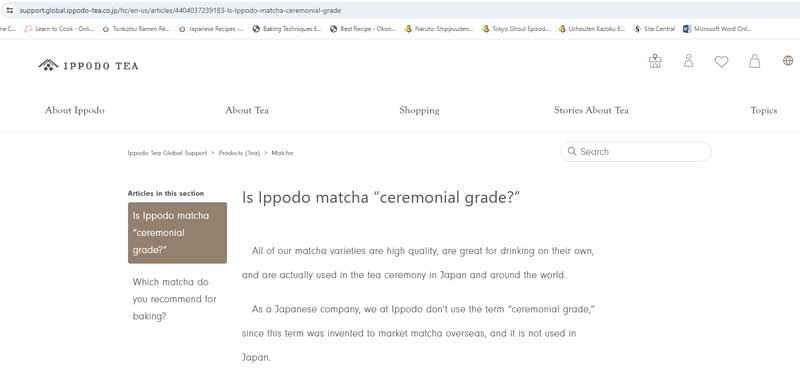
The real key to finding high-quality matcha is looking for that “first harvest” label. First harvest matcha is considered the cream of the crop. Because these first-growth leaves are typically richer in flavor and nutrients, they’re highly valued. They make a smoother, more vibrant green tea powder that’s just packed with benefits – like being really uplifting while still keeping you calm and focused.
So, when you’re looking for top-notch matcha, don’t get too caught up in terms like “ceremonial grade.” Instead, focus on whether it’s first harvest matcha. That’s your real clue that you’re getting something special. Remember, the best matcha comes straight from the tea plant’s first big stretch after its winter nap!
Ceremonial Grade Matcha: A Marketing Gimmick
Matcha is a type of green tea that has been around for a really long time, all the way back to when samurais were around in Japan. Now, you might think that because matcha is so old and important, everyone everywhere would know about it. But that’s not exactly the case.
If you go to places outside of Japan, like in the United States or Europe, and talk about matcha, some people might not have any idea what you’re talking about. They might not have heard of it before, or they might think it’s just any kind of green tea.
Interestingly, even in Japan, where matcha comes from, not everyone knows about it. Sure, people in Japan drink a lot of tea, but that doesn’t mean they all know about matcha. Some might just drink the regular green tea you find in tea bags without realizing that matcha is something different.
So, here’s where things get a bit marketing-savvy. In many places, especially where people are trying to sell tea, they use the term “ceremonial grade matcha.” Now, this sounds really fancy and special, doesn’t it? It’s supposed to make you think of traditional Japanese tea ceremonies, which are all about respect, simplicity, and enjoying the moment.
But here’s the catch: the term “ceremonial grade” is mostly used to make the tea sound more appealing, especially to people who aren’t familiar with matcha. It’s a marketing trick. They want you to think, “Oh, this must be the best kind of matcha if it’s good enough for a ceremony.”
The reality is, the real indicator of high-quality matcha should be whether it’s “first harvest.” This means the matcha is made from the very first leaves picked at the beginning of the tea season. These leaves are usually the finest and have the best flavor.
However, not everyone knows to look for “first harvest” when they’re buying matcha. Instead, they see “ceremonial grade” and think that’s the top quality, thanks to marketing strategies. That’s why, even though “ceremonial grade” might not be a term used traditionally in Japan for the highest quality matcha, it’s become popular worldwide as a way to sell matcha.
Why We Use The Term “Ceremonial Grade Matcha”
We use the term “ceremonial grade matcha,” but let me tell you why it’s not our first choice of words. When people go online or into stores looking for really good matcha, they often ask for “ceremonial grade matcha.” This term has become really popular, especially outside of Japan.
Now, when we first started our matcha journey, this kind of puzzled us. We were thinking, “Hmm, that’s not exactly the traditional way to talk about the best matcha.” Honestly, we weren’t big fans of using this term at first because it’s not how matcha is traditionally categorized in Japan. We’re all about authenticity and sticking to the roots of where matcha comes from.
But here’s the thing – it’s what many of our customers know and use. We realized that if we didn’t use the term “ceremonial grade matcha,” lots of people looking for high-quality matcha might not find us. They might miss out on experiencing our amazing and affordable matcha because they were searching for that specific term.
So, we decided to use “ceremonial grade matcha” to help matcha lovers find us. But we want you to know that when you come to us with that term in mind, you’re getting something special. We’re committed to giving you the best matcha experience, using leaves from the first harvest and paying attention to all the details that make a big difference in taste and quality.
We hope this helps clear things up! We’re here to make sure you get the best matcha while also understanding a bit more about the traditions and terms that come with it.
Why Your Ceremonial Grade Matcha Tastes Like Grass
Ever heard someone say matcha tastes like grass? They’re either misinformed or got tricked by sellers passing off lower-grade matcha as ceremonial grade. Here’s the lowdown:
- Quality Matters: Not all matcha is created equal. True ceremonial grade matcha should be smooth, slightly sweet, and rich in umami flavors. If it tastes like you’re chewing on lawn clippings, chances are it’s not the real deal. At Ujiha, our matcha is sourced from the finest tea fields in Uji, Japan, known for their centuries-old tea cultivation practices.
- Harvesting and Processing: Ceremonial grade matcha comes from the first harvest, or “Ichibancha,” where the youngest, most tender leaves are picked. These leaves are shaded before harvesting to boost chlorophyll levels, giving the matcha its vibrant green color and unique flavor profile. Lower grade matcha, often labeled as ceremonial by unscrupulous sellers, might come from later harvests with older, tougher leaves that do taste more grassy.
- Grinding Technique: The traditional stone grinding method is crucial for achieving the fine, smooth texture of top-tier matcha. This meticulous process can take up to an hour to grind just 30 grams of matcha! Cheaper matcha might be ground with industrial methods that don’t achieve the same finesse, resulting in a coarser texture and off-putting taste.
- Storage and Freshness: Matcha is sensitive to light, heat, and moisture. If it’s not stored properly, even the best matcha can degrade quickly, losing its delicate flavors and taking on a grassy or even bitter taste. Always store your matcha in an airtight container in a cool, dark place to keep it fresh and flavorful.
- Preparation is Key: Even high-quality matcha can taste off if not prepared correctly. Using water that’s too hot, not sifting the powder, or not whisking properly can all lead to a less than optimal experience. Check out our guide on preparing matcha to ensure you’re getting the best flavor from your tea.
Remember, when you sip on our Ujiha matcha, you’re not just drinking tea – you’re experiencing the result of generations of expertise and passion for tea cultivation. From our Ujiha Kotobuki Supreme Organic Ceremonial Grade Matcha to our Ujiha Awa Premium Organic Ceremonial Grade Matcha, we guarantee a product that’s been meticulously crafted to provide the best matcha experience possible.
So next time someone tells you matcha tastes like grass, you can confidently say they just haven’t had the good stuff yet.
Health Benefits of First Harvest Matcha
Alright, friends, let’s dig into what makes first harvest matcha so special for your health. Imagine a superhero for your body, and that superhero is first harvest matcha. It’s like the first picked apple from the tree, packed with the best flavors and nutrients!
Powerful Antioxidants – The Body’s Protectors: First off, first harvest matcha is bursting with antioxidants. “What are antioxidants?” you might wonder. Well, think of them as your body’s little warriors fighting off the bad guys called ‘free radicals.’ These bad guys can harm our cells, making us sick. But the antioxidants in first harvest matcha help protect your cells and keep you feeling good.
More Nutrients Than Regular Matcha: Since first harvest matcha comes from the first pick of tea leaves, it’s like getting the cream of the crop. These young, tender leaves have had more time to soak up nutrients from the sun and soil, making them super rich in good stuff for your body. So, when you drink first harvest matcha, you’re getting more vitamins, minerals, and antioxidants than you would from later picks.
Energy Boost Without the Jitters: If you’re tired of coffee that makes your heart race, first harvest matcha could be your new best friend. It has caffeine, yes, but it’s released slowly into your body, giving you energy without making you feel jittery. Plus, it’s got something called L-theanine, which helps keep your mind calm and focused. It’s like having a steady flow of energy while being in a Zen garden.
Heart Health and Sugar Helper: This superhero tea is also great for your heart and can help keep your blood sugar levels in check. So, if you’re worried about heart disease or diabetes, sipping some first harvest matcha might be a good idea. It’s like giving your heart a little hug and telling your blood sugar, “Hey, let’s stay cool,” every time you drink a cup.
Why First Harvest Matcha Stands Out: Now, you might be wondering, “Isn’t all matcha good for you?” Sure, all matcha has benefits, but first harvest matcha is like the all-star player of the team. It’s packed with more goodness because it’s made from the very first leaves picked during the harvest season. This means it’s fresher and has had more time to gather nutrients from the environment. First harvest have the most abundant L-theanine and caffeine content.
When we talk about our first harvest matcha, like the Ichi, Awa, and Kotobuki from Ujiha, we’re talking about some top-notch stuff. Each type has its unique charm and health benefits, making them not just a treat for your taste buds but also a boon for your body.
Next time you’re enjoying a cup of first harvest matcha, remember all the amazing things it’s doing for your health. It’s not just a drink; it’s a wellness experience in a cup! Cheers to good health and great tea!
-
 Ujiha Koku Ceremonial Grade Matcha 50gPrice range: $59.99 through $69.99
Ujiha Koku Ceremonial Grade Matcha 50gPrice range: $59.99 through $69.99 -
 Ujiha Tsuyu Organic Ceremonial Grade Matcha 50g$66.99
Ujiha Tsuyu Organic Ceremonial Grade Matcha 50g$66.99 -
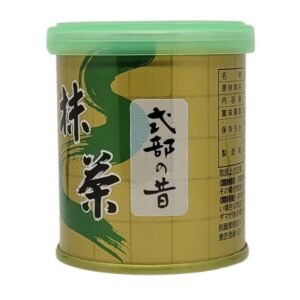 Yamamasa Koyamaen Shikibunomukashi 30g$66.99
Yamamasa Koyamaen Shikibunomukashi 30g$66.99 -
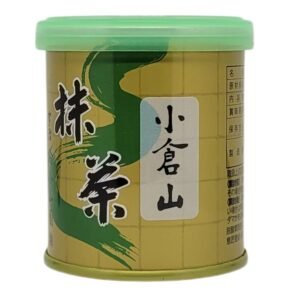 Yamamasa Koyamaen Ogurayama 30g$54.99
Yamamasa Koyamaen Ogurayama 30g$54.99 -
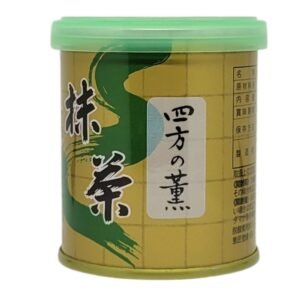 Yamamasa Koyamaen Yomonokaori 30g$52.99
Yamamasa Koyamaen Yomonokaori 30g$52.99 -
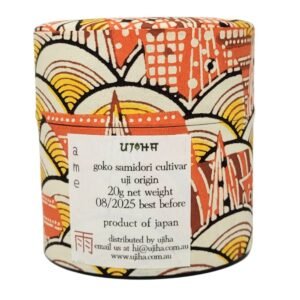 Ujiha Ame Supreme Ceremonial Grade Matcha 2024 First HarvestPrice range: $39.99 through $54.99
Ujiha Ame Supreme Ceremonial Grade Matcha 2024 First HarvestPrice range: $39.99 through $54.99 -
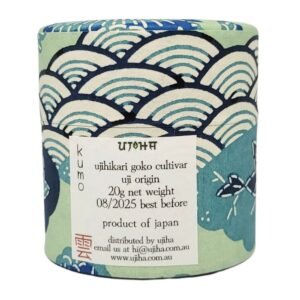 Ujiha Kumo Super Supreme Ceremonial Grade Matcha First Harvest 2024Price range: $49.99 through $64.99
Ujiha Kumo Super Supreme Ceremonial Grade Matcha First Harvest 2024Price range: $49.99 through $64.99 -
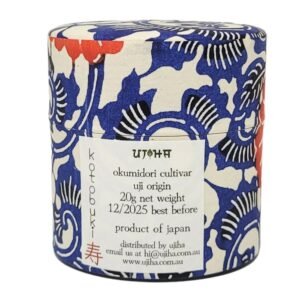 Ujiha Kotobuki Supreme Organic Ceremonial Grade MatchaPrice range: $39.99 through $54.99
Ujiha Kotobuki Supreme Organic Ceremonial Grade MatchaPrice range: $39.99 through $54.99 -
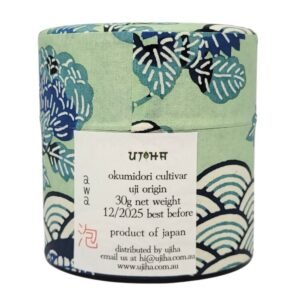 Ujiha Awa Premium Organic Ceremonial Grade Matcha 2024 First HarvestPrice range: $44.99 through $59.99
Ujiha Awa Premium Organic Ceremonial Grade Matcha 2024 First HarvestPrice range: $44.99 through $59.99
Culinary Uses of First Harvest Matcha
Let’s talk about something exciting and tasty—using first harvest matcha in your daily diet! This isn’t just about making tea; it’s about adding a splash of color, flavor, and health to your meals and drinks. First harvest matcha is a type of green tea powder that’s bright green and packed with a fresh, grassy flavor. It comes from the very first pick of tea leaves in the year, which makes it really special.
Traditional and Modern Recipes
Traditionally, matcha is used to make a Japanese tea called “matcha tea,” which is smooth, a bit frothy, and super rich in flavor. But don’t stop there! You can use first harvest matcha in many different recipes, both traditional and modern.
For a start, you could blend it into smoothies for a healthy, energizing start to your day. If you like baking, how about adding matcha to your cookies, cakes, or bread? It gives them a lovely color and a unique taste. Plus, it’s a fun way to sneak some extra nutrients into your snacks!
Hot and Cold Beverages
Now, onto drinks. Apart from the classic hot matcha tea, why not try a cold matcha latte? Just mix matcha powder with cold milk (any kind you like), add some ice, and there you go—a refreshing drink perfect for warm days. If you’re into more creative experiments, you can add matcha to your morning smoothies or even make matcha-infused lemonade!
Cooking and Baking
Matcha isn’t just for drinks; it’s great in foods too. You can add matcha powder to your pancake or waffle batter to make matcha-flavored breakfast treats. Or, mix it into yogurt or oatmeal for a quick, nutritious meal.
For lunch or dinner, you can get adventurous and sprinkle matcha on top of rice or pasta dishes. It adds a unique twist and boosts the health benefits of your meals. Just remember, a little goes a long way because matcha is quite powerful in flavor.
Easy Tips for Everyday Cooking
If you’re new to using matcha in cooking, start with small amounts to see how you like the flavor. Remember, high-quality first harvest matcha will give you the best taste and color. Also, try to mix the matcha with a little bit of warm water before adding it to your recipes; this helps to get rid of any lumps and makes sure the flavor spreads evenly.
Lastly, be creative! Matcha is versatile, so feel free to experiment and find what works best for you. Whether it’s adding a pinch to your morning toast or mixing it into your salad dressing, there are endless possibilities.
So there you go, welcome to the green world of first harvest matcha and enjoy its unique flavor in your meals and drinks. It’s not just about enjoying a cup of tea; it’s about exploring new tastes and adding a boost of health to your everyday diet. Enjoy your culinary adventures with matcha!
Brewing the Perfect Cup of First Harvest Matcha
Let’s break down how to make a wonderful cup of first harvest matcha in simple steps. Think of it as creating a little magic in your kitchen.
What You’ll Need:
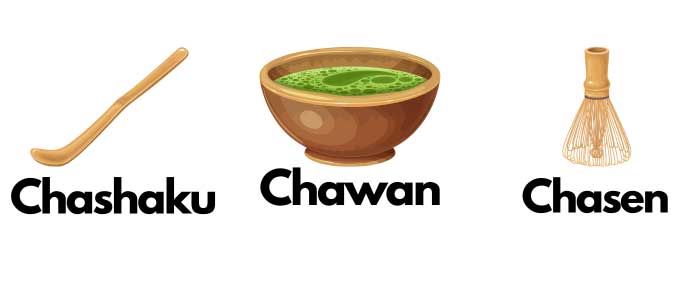
- A matcha bowl (Chawan): This is not just any bowl; it’s special for making matcha and helps you whisk freely.
- A bamboo whisk (Chasen): This looks like a little hand broom and is perfect for mixing your matcha. And if you only had to buy one matcha tool, the bamboo whisk is it. Buy an affordable bamboo whisk that will single-handedly elevate your matcha game.
- A matcha scoop (Chashaku): This helps you scoop out just the right amount of matcha powder.
- A sifter: This helps make your matcha smooth and clump-free.
- Hot water: But not boiling! You’ll want it to be about 70°C (158°F), which is less than boiling to keep the matcha sweet and not bitter.
Step-by-Step Brewing:
- Sifting the Matcha: Start by sifting your matcha powder into the bowl. This gets rid of any lumps and makes your tea smooth. Imagine you’re sifting flour for a cake; it’s the same idea here.
- Scooping the Matcha: Use your matcha scoop to get about 1.5g to 2g of matcha, which is usually about two scoops. This is the perfect amount for one cup.
- Adding the Water: Next, add about 2oz (60ml) of your warm water. Remember, the water should be warm, not boiling, to keep the taste just right.
- Whisking: Now, take your bamboo whisk and start whisking the matcha and water. You’ll want to move fast, in a back and forth motion, to get a nice frothy layer on top. It’s like whisking eggs, but you’re trying to get air into the mix to make it light and frothy.
- Serving: If you’re serving the matcha to someone else, turn the bowl so the prettiest part faces them. It’s a sign of respect and care. If it’s just for you, still appreciate the look before you start sipping.
- Enjoying: Take a moment to enjoy your creation. Look at the color, smell the aroma, and then take a sip. Good matcha will make you feel relaxed and alert at the same time.
- Cleaning Up: After you’re done, clean your whisk and bowl with warm water. Dry them properly so they’re ready for your next matcha moment.
And there you go! That’s how you make a perfect cup of first harvest matcha. Remember, it’s not just about drinking tea; it’s about taking a moment for yourself and enjoying the process. So, take your time, relax, and enjoy your matcha journey!
Sourcing and Selecting First Harvest Matcha
Picking the right first harvest matcha can feel a bit like finding the perfect fruit at the market. You want something fresh, vibrant, and full of flavor. Here’s how to make sure you’re getting the best of the best:
1. Look for Color: First up, check out the color. High-quality first harvest matcha should be a bright, vivid green. If it’s dull or yellowish, it’s probably not fresh or of good quality. Imagine the color of fresh grass in spring – that’s what you’re looking for!
2. Feel the Texture: Next, let’s talk about texture. If you get a chance, feel the matcha powder between your fingers. It should feel fine and silky, not gritty or coarse. This smooth texture means it was ground properly, which is super important for good matcha.
3. Smell the Aroma: Now, take a sniff. Good matcha should smell fresh and grassy, maybe even a little sweet. If it smells musty or like hay, it’s probably old or wasn’t stored right.
Storing and Preserving Matcha: Once you’ve found your perfect matcha, you’ve got to keep it that way! Here’s how:
1. Keep it Cool: Matcha doesn’t like heat. Store your matcha in a cool, dark place. A cupboard away from your stove or oven is perfect. Heat can mess with matcha’s flavor and color, so keeping it cool is key.
2. Seal it Tight: Air is another enemy of matcha. Keep your matcha in an airtight container to protect its freshness. Once you open a pack, try to use it within a few weeks. If it’s exposed to air too long, it can get stale.
3. Away from Strong Smells: Matcha can pick up smells from other foods. So, keep it away from anything with a strong odor. You don’t want your matcha tasting like last night’s dinner!
4. Consider the Fridge: If you won’t use your matcha quickly, you can store it in the fridge. Just make sure it’s in a super airtight container so the smell of leftover food does not seep into the matcha.
By choosing your first harvest matcha carefully and storing it properly, you can enjoy its vibrant color, delicious flavor, and health benefits anytime. Remember, taking a little extra care with your matcha can make your tea time even more special!
Conclusion: The Unique Experience of First Harvest Matcha
In the enchanting world of ceremonial grade matcha, first harvest matcha holds a unique position that’s truly special. Here’s why this premium tea can be such a unique experience:
- Unparalleled Quality and Taste: First harvest matcha is all about the finest quality leaves that are picked during the first flush of spring. It’s like the tea plant has been saving up all its energy and nutrients over the winter, and then it gives us this incredible, vibrant green gift as soon as spring arrives. This tea has a smooth, rich flavor that can turn a simple tea time into a luxurious experience. It’s not just tea; it’s like sipping on pure, concentrated springtime.
- A Rich Tradition: When you sip on first harvest matcha, you’re partaking in a centuries-old tradition. It’s like holding a piece of history in your cup. The meticulous care, the tradition, the precise methods—all of this comes together to create something that’s not just delicious, but deeply meaningful. It’s more than a beverage; it’s a bridge to the past and an invitation to slow down and appreciate the moment.
- Health Benefits Galore: First harvest matcha isn’t just good for your taste buds; it’s also packed with health benefits. It’s like a powerhouse of antioxidants, which are these amazing substances that help protect your body from damage by harmful molecules. Imagine your body as a castle and antioxidants as the knights defending it. Drinking first harvest matcha is like sending in an elite team of knights to keep you healthy.
- A Boost for Your Brain: Not only is this tea great for your body, but it’s also a friend to your mind. The unique combination of caffeine and L-theanine in first harvest matcha can help you feel more alert and focused, but in a calm, centered way. It’s like having the energy and clarity to tackle your day, without the jittery feeling you might get from coffee.
- A Moment of Zen: Preparing and enjoying first harvest matcha can be a meditative experience. The act of whisking the tea and savoring its unique flavor can help you find a moment of peace in your busy day. It’s like a mini-retreat in a cup, a way to find calmness and balance amid the chaos.
The world of first harvest matcha is not just about enjoying a premium tea. It’s an invitation to experience the unmatched flavor, embrace a rich tradition, boost your health, find mental clarity, and discover a moment of peace. It’s a journey worth taking, one sip at a time. Why not embark on this beautiful tea journey and see where it takes you?
-
 Ujiha Koku Ceremonial Grade Matcha 50gPrice range: $59.99 through $69.99
Ujiha Koku Ceremonial Grade Matcha 50gPrice range: $59.99 through $69.99 -
 Ujiha Tsuyu Organic Ceremonial Grade Matcha 50g$66.99
Ujiha Tsuyu Organic Ceremonial Grade Matcha 50g$66.99 -
 Yamamasa Koyamaen Ogurayama 30g$54.99
Yamamasa Koyamaen Ogurayama 30g$54.99 -
 Yamamasa Koyamaen Yomonokaori 30g$52.99
Yamamasa Koyamaen Yomonokaori 30g$52.99 -
 Ujiha Ame Supreme Ceremonial Grade Matcha 2024 First HarvestPrice range: $39.99 through $54.99
Ujiha Ame Supreme Ceremonial Grade Matcha 2024 First HarvestPrice range: $39.99 through $54.99 -
 Ujiha Kumo Super Supreme Ceremonial Grade Matcha First Harvest 2024Price range: $49.99 through $64.99
Ujiha Kumo Super Supreme Ceremonial Grade Matcha First Harvest 2024Price range: $49.99 through $64.99 -
 Ujiha Kotobuki Supreme Organic Ceremonial Grade MatchaPrice range: $39.99 through $54.99
Ujiha Kotobuki Supreme Organic Ceremonial Grade MatchaPrice range: $39.99 through $54.99 -
 Ujiha Awa Premium Organic Ceremonial Grade Matcha 2024 First HarvestPrice range: $44.99 through $59.99
Ujiha Awa Premium Organic Ceremonial Grade Matcha 2024 First HarvestPrice range: $44.99 through $59.99 -
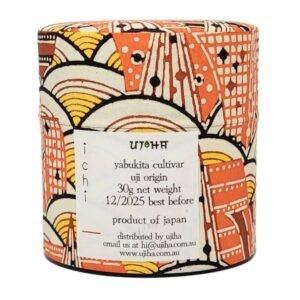 Premium Ceremonial Grade Matcha Ichi 40g First Harvest 2025Price range: $39.99 through $54.99
Premium Ceremonial Grade Matcha Ichi 40g First Harvest 2025Price range: $39.99 through $54.99

